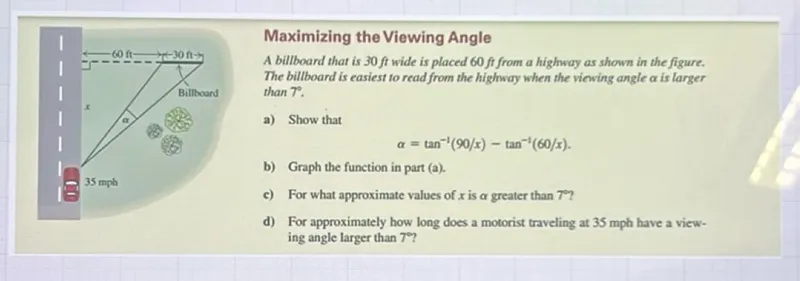Questions: Maximizing the Viewing Angle A billboard that is 30 ft wide is placed 60 ft from a highway as shown in the figure. The billboard is easiest to read from the highway when the viewing angle α is larger than 7°. a) Show that α = tan⁻¹(90 / x) - tan⁻¹(60 / x). b) Graph the function in part (a). c) For what approximate values of x is α greater than 7°? d) For approximately how long does a motorist traveling at 35 mph have a viewing angle larger than 7°?

Transcript text: Maximizing the Viewing Angle
A billboard that is 30 ft wide is placed 60 ft from a highway as shown in the figure. The billboard is easiest to read from the highway when the viewing angle $\alpha$ is larger than $7^{\circ}$.
a) Show that
\[
\alpha=\tan ^{-1}(90 / x)-\tan ^{-1}(60 / x) .
\]
b) Graph the function in part (a).
c) For what approximate values of $x$ is $\alpha$ greater than $7^{\circ}$ ?
d) For approximately how long does a motorist traveling at 35 mph have a viewing angle larger than $7^{\circ}$ ?





